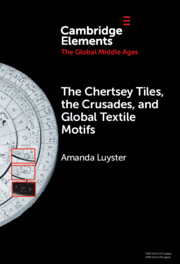Element contents
The Chertsey Tiles, the Crusades, and Global Textile Motifs
Published online by Cambridge University Press: 07 December 2023
Summary
- Type
- Element
- Information
- Online ISBN: 9781009353168Publisher: Cambridge University PressPrint publication: 21 December 2023
Bibliography
- 3
- Cited by

